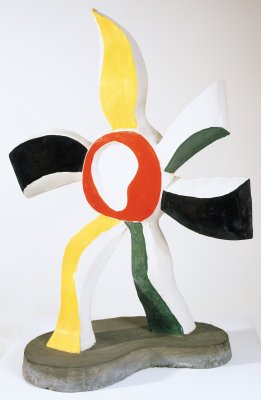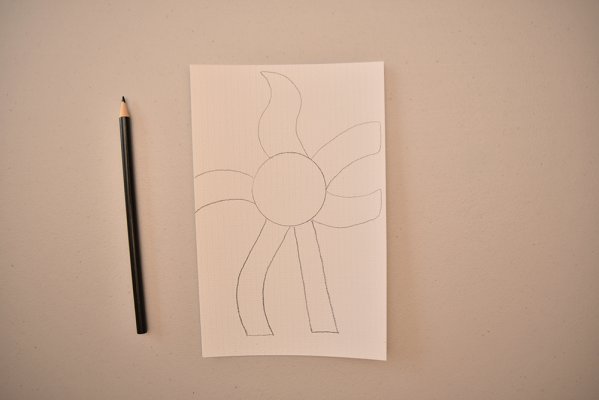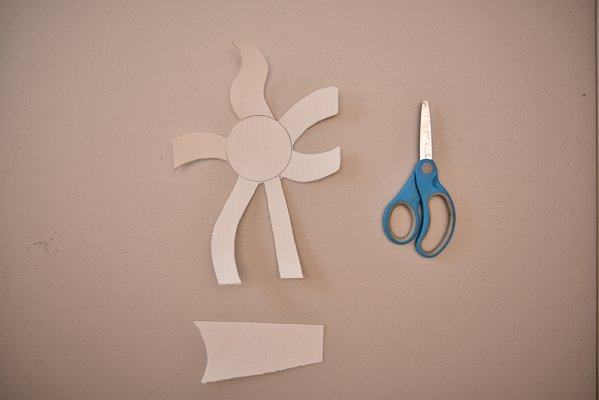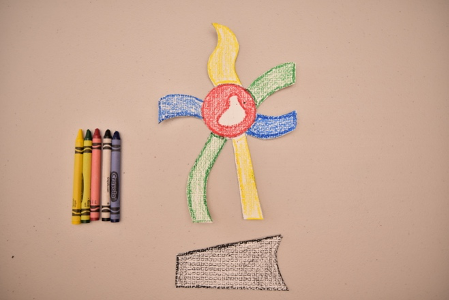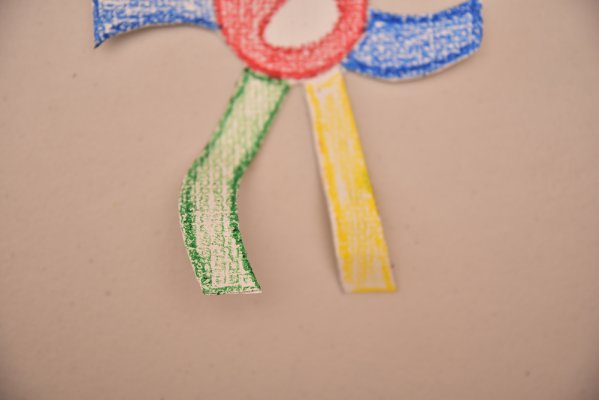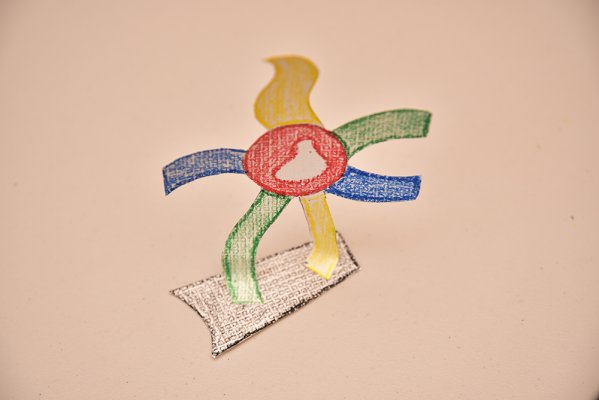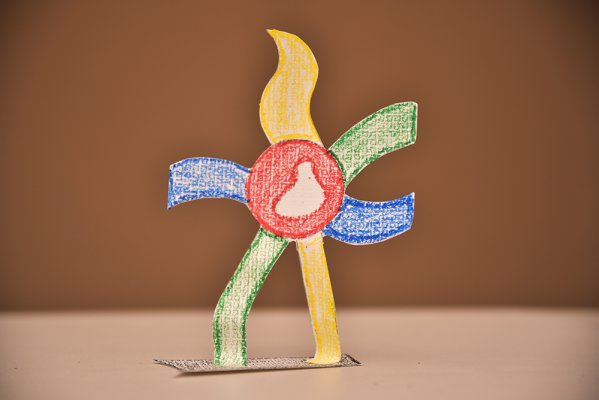Getting Started
- How many petals do you see on this flower?
- Which petal do you think the head is?
- Do you think the flower is walking fast or slow?
Materials
- Pencil
- Paper, cardstock, or cardboard
- Scissors
- Coloring materials (crayons, markers, colored pencils, etc.)
- Glue
Artmaking Activity
1. Sketch the figure of your walking flower on your paper. (Thin cardstock works best, but if you don’t have it, you can glue your paper to the side of a cereal box to make the paper stiffer.)
